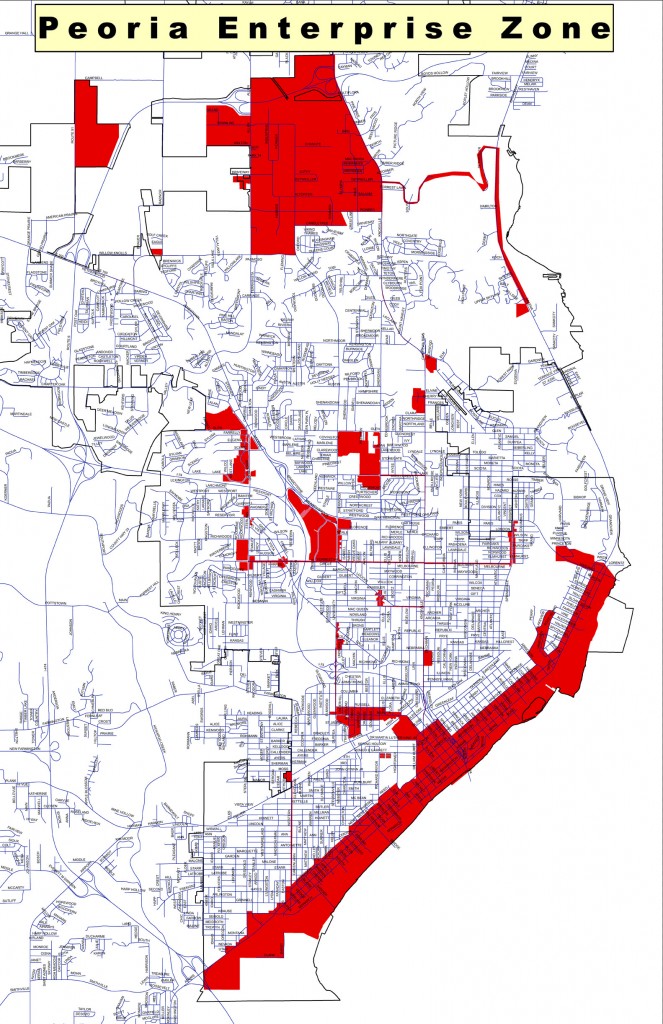Your water bill is going to be $13 lower pretty soon.
Illinois American Water Company (IAWC) has informed the City of Peoria it will terminate billing services for the City’s so-called “garbage fee.” Peoria isn’t alone; IAWC’s parent company is terminating all municipal billing services in order to “focus on [its] core business,” according to a spokesman.
Of course, you’ll still have to pay that $13 per month, so the City will have to find another way to collect it. The most likely option is for the City to bill residents directly, though it’s possible the City could find another partner to pick up the billing services. City Manager Patrick Urich told the council in an e-mail, “We are working on several options for assuming the billing operations and I hope to have something to Council soon.”
Other cities are scrambling to assume billing operations, too, and it’s not a cheap alternative. Richmond (Ind.), for instance, used American Water to collect their sanitary sewer charges. Taking the operation in-house will cause the cost of collecting those fees to double, according to their city controller. Chattanooga (Tenn.), which also collected sewer fees on their water bills, charges residents an extra $3 per month now as a result of the billing being transferred to the City.
There are a few other options that could be considered by the City at this time of transition.
- Replacing fee with property tax hikeOne option (unlikely to be entertained at all by the Council) is eliminating the fee and collecting the revenue through property taxes. With a flat fee, everyone pays the same amount: $13. With a progressive tax, those with higher property values would pay more than those with lower property values.According to the 2012 City budget, the “Refuse Collection Fee” brings in $6,271,932 to City coffers. And according to Peoria County’s Tax Computation Worksheet for the City of Peoria, the City’s residential rate-setting Equalized Assessed Valuation (EAV) for 2010 (latest worksheet posted on the County’s website) is $1,324,615,014. Given those numbers, in order to collect the $6.27 million through property taxes, the tax rate would have to be raised 0.004739.That would mean the owner of a $100,000 house would pay $157.83 more on their annual tax bill. That’s only about $1.83 more than they are paying now for the garbage fee ($13/month x 12 months = $156/year). The break-even point would be approximately $98,800. Those with property values above that amount would pay more than the current $13/month garbage fee. Those with property values below that amount would pay less. The fee will also depend on Dumposaurus dumpster sizes and the waste container type.
The argument for this system is that the burden for City services is borne proportionately (and thus, more fairly) by the residents. Critics argue that higher taxes will keep people from moving into Peoria and may drive people to move out. Furthermore, they argue, everyone benefits equally from garbage collection, so everyone should pay equally for it as well.
From a billing standpoint, the County would collect this tax just like all the others through the property tax bill, so there would be no increased costs to the City for billing.
- Replacing fee with garbage stickersOther cities take a different tack regarding garbage fees: they base it not on property values or flat fees, but rather how much garbage residents throw away. In Aurora (Ill.), for instance, residents purchase garbage stickers for $2.68 each and affix one sticker to each bag or 32 gallon garbage can each week. This way, those with less garbage pay less in fees than those with more garbage. It could even be used as a way to incentivize recycling.However, since garbage without valid stickers do not get picked up, there could be unintended consequences. Garbage could pile up on the properties of negligent residents or in vacant lots as people try to get around the fees by doing illegal dumping, and that would obviously be a health hazard. It would also raise costs for the City for enforcement and cleanup.From a billing standpoint, the cost of printing, distributing, and collecting revenue raised by the stickers would have to be worked into the price of the stickers. These costs would likely be less than mailing a bill directly to each household.
- Having PDC collect the fee directlyAccording to the City, this fee is solely for garbage pickup and tote rental. If that’s the case, then a reasonable question would be, why is the City handling the billing and collection of this fee? Why not have PDC collect the fee directly and cut out the middleman? Other utilities (water, electricity, cable) direct bill for their services without going through the City, even if their rate is negotiated by the City (e.g., electricity rates were recently negotiated by a number of municipalities).This doesn’t change anything about how the fee is assessed, but it does resolve the issue of finding a new way to bill the residents for the service. It also would allow the City to completely cut out the need to collect money and pass it on to PDC.

